Plastic surgeon reveals how he thinks Harry Styles brought his famous hairline back from the dead
Superstar Harry Styles is known for his luscious locks.
So when he debuted a buzzcut last year, it shocked many of his fans. One even said it “hurt me emotionally, mentally and physically.”
Now a leading plastic surgeon claims it wasn’t a style choice. Dr. Gary Linkov believes Styles, 30, had a hair transplant that involved shaving his head.
Dr. Linkov said the fashion icon had noticeably thinning hair at the corners of his hairline leading up to his dramatic haircut in November 2023, which had become less dramatic as his hair grew back this year.
The procedure that Dr. Linkov speculates that Harry had surgery involves taking hairs from an area of the head and placing them in small incisions where baldness occurs to promote the growth of new hair.
Dr. Gary Linkov, based in New York City, pointed to these photos from 2021 and 2024 as possible signs that Harry Styles had a minor hair transplant

The above recording from Dr.’s YouTube video Linkov shows Harry at age 16 in 2010. The plastic surgeon said the singer showed no signs of baldness
Analyzing photos of Harry over the years in one of his latest YouTube videosDr. Linkov, who has performed hundreds of hair transplants, said Harry stepped into the spotlight in 2010 at the age of 16 with a full head of hair.
Rating him based on the Norwood scale, a scale used to measure male pattern baldness, Dr. Linkov that the singer was in stage 1 – meaning he showed no signs of hair loss or hairline receding.
But two years later, his hair was in stage 2 – the slight receding of the hairline around the temples – and he appeared to have a widow’s peak at the center front of his hairline. The star also showed some receding at the corners of his hairline.
Dr. Linkov also pointed out that Harry’s temples began to recede around this time and the corners of his hairline became further away from his eyebrows.
He said: ‘You can see Harry’s temples starting to retract sideways. His temples are now further away and pulled away from the eyebrows than they were a few years ago.”
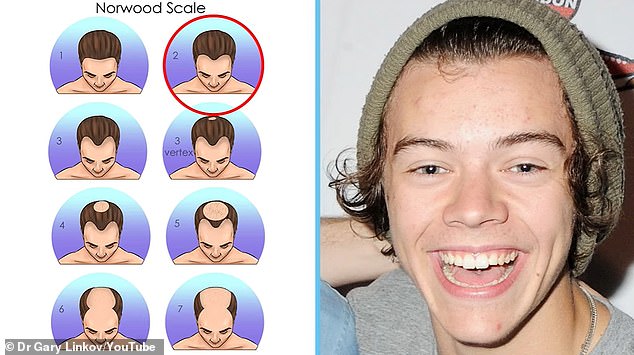
In 2012, at the age of 18, Harry’s hairline began to recede slightly, placing him at stage 2 on the Norwood scale
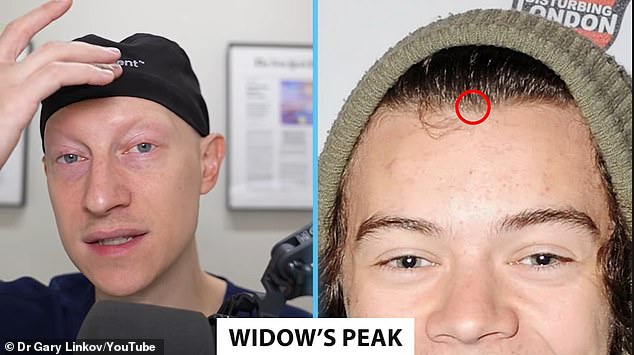
Dr. Linkov said in 2012 that Harry appeared to be having widow’s peak
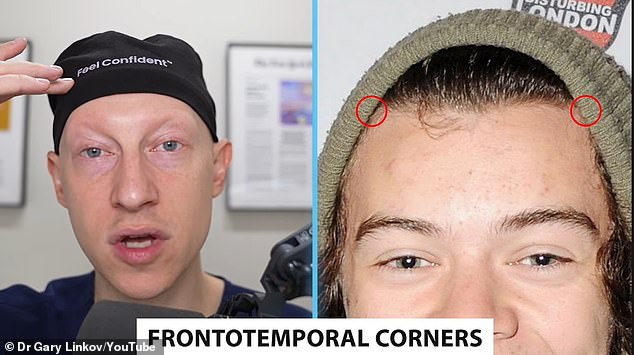
Dr. Linkov said in 2012 that Harry’s hair also began to recede at the corners of his hairline
The plastic surgeon continued, saying that it wasn’t until 2019, when the singer was 25 years old, that he saw a difference in Harry’s hairline again. Now he had moved to stage 3 on the Norwood scale, which is the first sign of clinically significant baldness.
At this stage, the hairline recedes deeper at the temples, forming an M, U or V shape.
Dr. Linkov said the recession was more prominent on Harry’s left side, putting him in the minority because most people who experience baldness have more recession on their right side.
The doctor added that Harry still had quite dense hair.
However, in November 2023, at the age of 29, Harry debuted his shaved head. And while some suggested the buzzcut was a response to a song by his ex-girlfriend Taylor Swift, Dr. Linkov said he believes it was when Harry underwent his hair transplant.
It is in the winter of 2024 that Dr. Linkov points out what appears to be regrowth of the left corner of Harry’s hairline.
He said: ‘It looks angular. It looks less withdrawn and it looks rounder and more symmetrical with its right side. However, his temples and central hairline are unchanged.
“So my hypothesis is that Harry’s shaving a year earlier was actually related to a possible hair transplant to balance the contours of his hairline.”
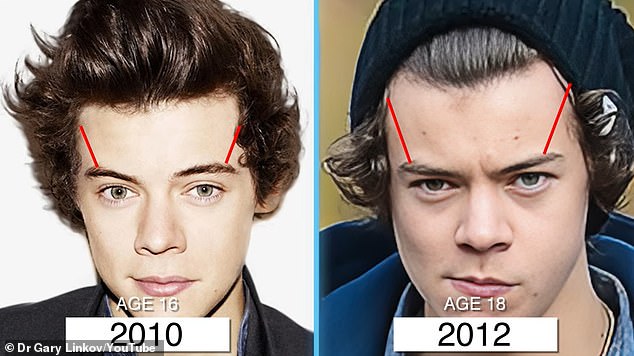
Compared to just two years earlier, in 2012, Harry’s hairline receded from his eyebrows
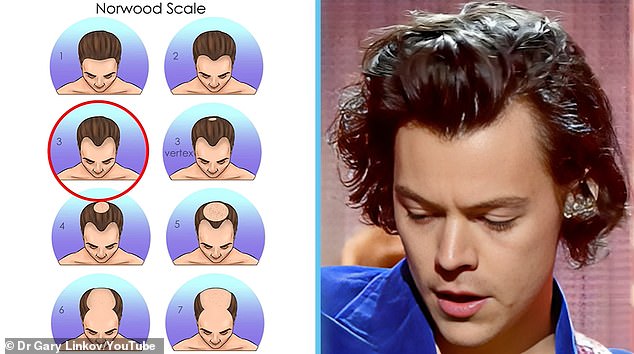
In 2019, Dr. Linkov said that Harry’s hairline recession had progressed to stage 3 on the Norwood hair loss scale
He added: ‘It was a subtle hair transplant… probably involving extracting hair from the back of the head.’
The plastic surgeon explained that Harry had likely undergone a follicular unit extraction (FUE), which involves moving individual hair follicles from the back of the head to areas where hair was thinning.
With a FUE, the area where the hair follicles – tube-like structures that promote hair growth – are transplanted are shaved to allow for the extraction of hundreds to thousands of follicles more easily.
Dr. However, Linkov suggested that Harry’s procedure was probably less significant, with only 200 to 500 follicles transplanted.
Then those follicles are transplanted to the balding area.
A FUE is often performed in multiple sessions of two to four hours, spread over several days. It is considered a minor procedure and patients can return home after each session and continue as normal.
During the procedure, doctors use a micro-punch instrument to remove the follicles and make small incisions with a needle where the follicles are to be placed. Then the transplanted follicles are inserted into those incisions.

Harry is known for his luscious hair, and it’s even mentioned in a song by ex-girlfriend Taylor Swift (both pictured above in 2012)
The area where the hair was extracted may bleed for about a week after the procedure and may cause scabbing.
FUE transplants can also leave small scars where the hair follicles have been removed, although these are not normally noticeable.
The goal of an FUE transplant is to allow the transplanted follicles to grow new hair on the previously bald area. After the procedure, the follicles are nourished by blood vessels, which will promote new hair growth.
Harry has not commented publicly on his possible hair transplant and sources say he has not undergone the transplant.
A FUE transplant can cost between $4,000 and $15,000, depending on how much hair is transplanted.
Harry is not alone in his premature hair loss.
By age 35, two-thirds of American men experience baldness, estimates from the American Hair Loss Association suggest.
And it is estimated that by 2027, 230,000 people will undergo hair transplants annually in the US, with most patients being men.
By age 50, this rises to about 85 percent of men becoming significantly thinner.
